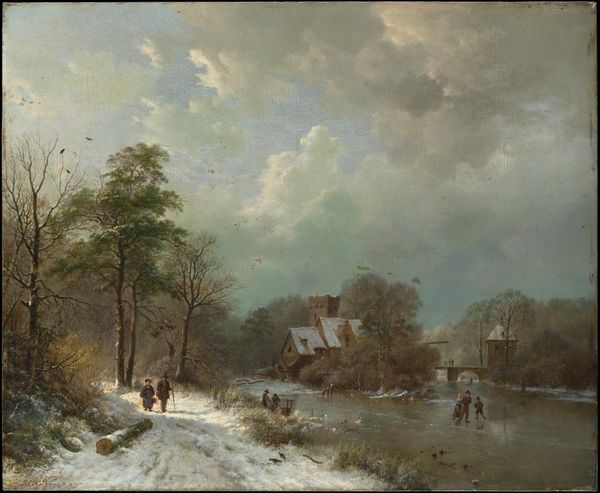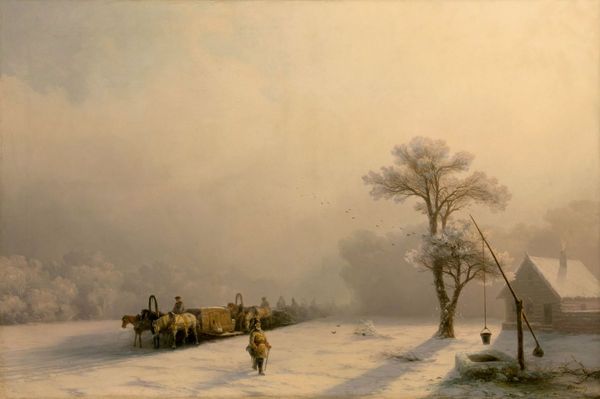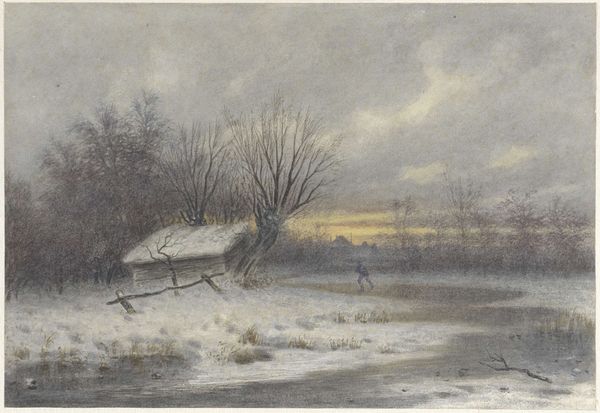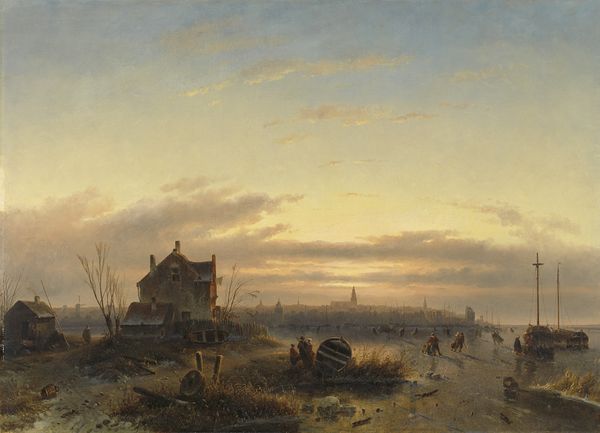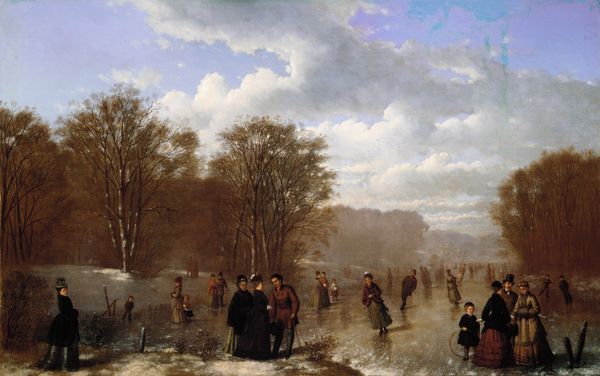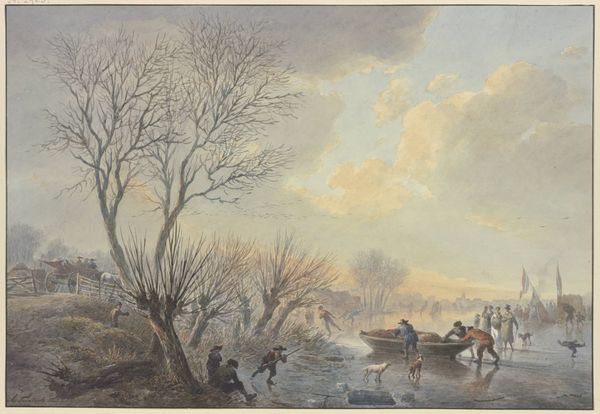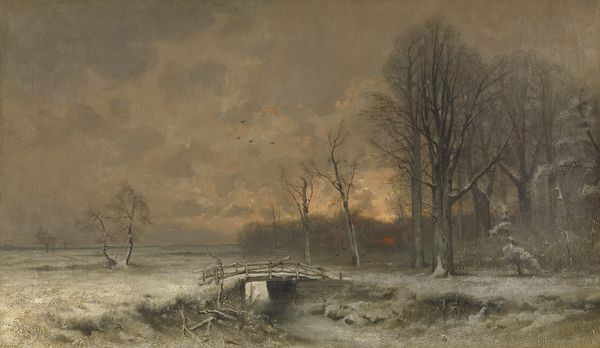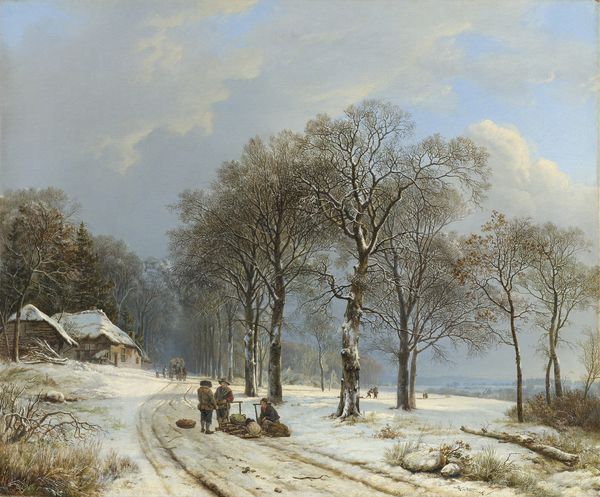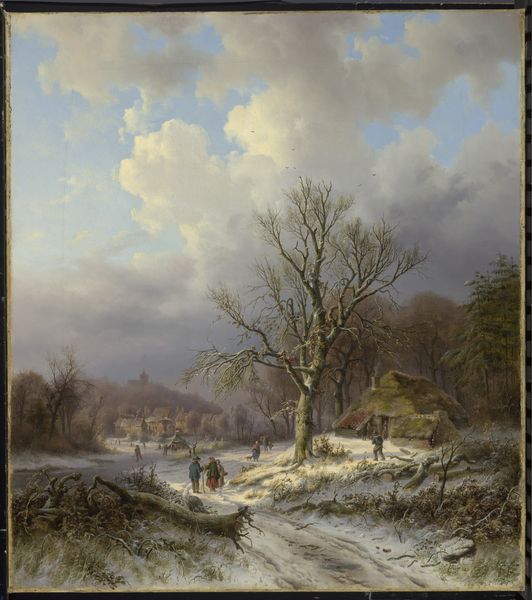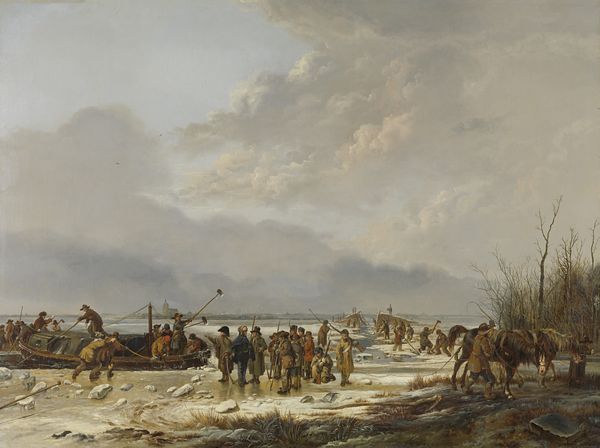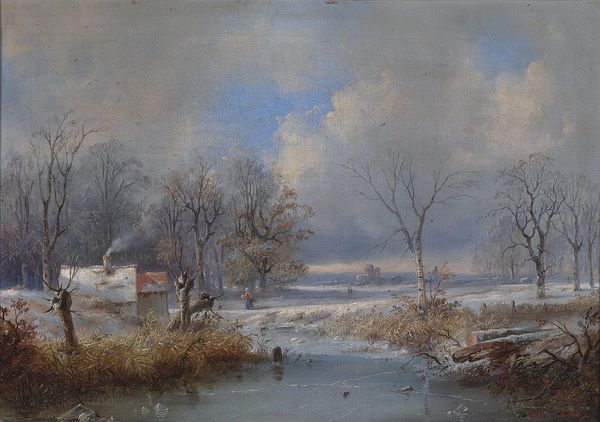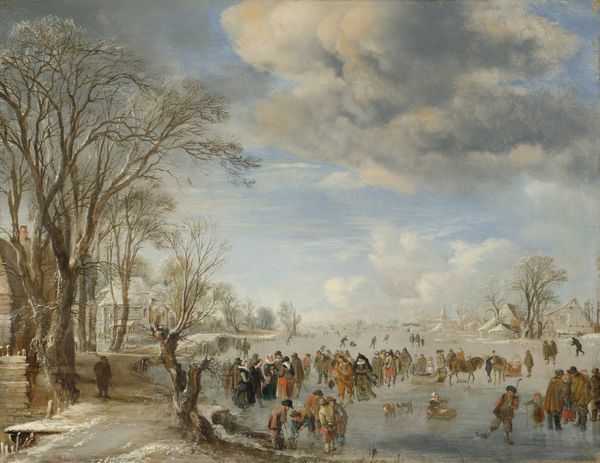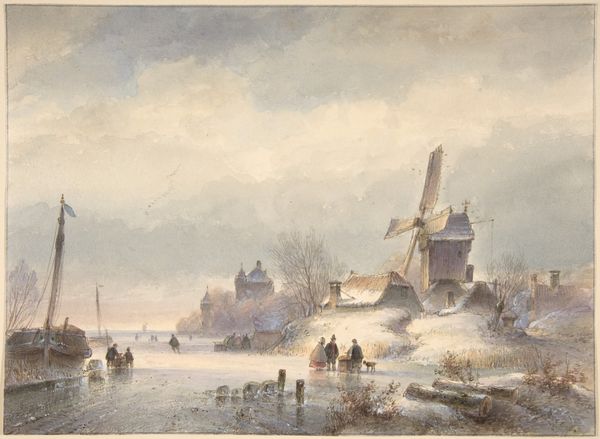
Dimensions: height 70 cm, width 107 cm
Copyright: Rijks Museum: Open Domain
Curator: Andreas Schelfhout painted "A Frozen Canal near the River Maas" in 1867. This landscape, rendered in oil on canvas, captures a winter scene teeming with life and movement. What are your initial impressions? Editor: Brrr! It looks nippy! The pale sky, the skeletal trees... it's a study in chilly serenity. The people feel like little dark commas punctuating the icy page. I can almost hear the scrape of skates. Curator: It's interesting you mention that. Genre scenes depicting everyday life during the Dutch Golden Age, like this one, gained enormous popularity. Paintings like this weren't just about aesthetics. They reflected the rising mercantile class and a burgeoning sense of national identity. Editor: I can see that. It feels… democratic. Not gods and myths, but ordinary folks just trying to get around on a Tuesday, albeit a very picturesque Tuesday. There’s something deeply satisfying in that grounding, that normalcy. Curator: Precisely! Schelfhout mastered the art of representing atmosphere, and the rendering of the ice itself is masterful. Notice the reflections, the subtle gradations of tone, all achieved with oil paint! These depictions boosted morale, a sense of hope for a new generation! Editor: It's funny, isn't it? Something so frozen can feel so alive. Perhaps it's because he populates it with people and movement. Without them, it’d be just another bleak winter's day. They infuse the canvas with life! Even the bare trees somehow feel less mournful and more celebratory with their presence. Curator: Yes, Schelfhout uses Romanticism’s aesthetic appreciation for nature, merging it with the Realist style that also rose to prominence in 19th-century Western art. This work can then be read in a much wider context, with close reference to historical developments within art practice, that shaped societal values! Editor: To me, it's the kind of painting that invites storytelling. I start imagining the lives of those figures on the ice, their hopes and worries as they glide across the frozen river. Were they worried the ice would crack, were they going to their workplace, did they find the love of their life skating? You never know... Curator: Indeed. Paintings of this kind offer us a window into a specific moment in time, revealing not only the landscape, but the cultural and historical context as well. Editor: A reminder that even in the depths of winter, life persists. And sometimes, it even finds a way to have a bit of fun.
Comments
rijksmuseum about 2 years ago
⋮
This winter landscape presents a typically Dutch river scene: a panoramic, tranquil world almost devoid of colour. The activity on the ice creates a cheerful accent. Schelfhout specialized in this genre. His frozen winter scenes, which allude to the 17th century, were extremely popular. They were even called ‘little Schelfhouts’.
Join the conversation
Join millions of artists and users on Artera today and experience the ultimate creative platform.
